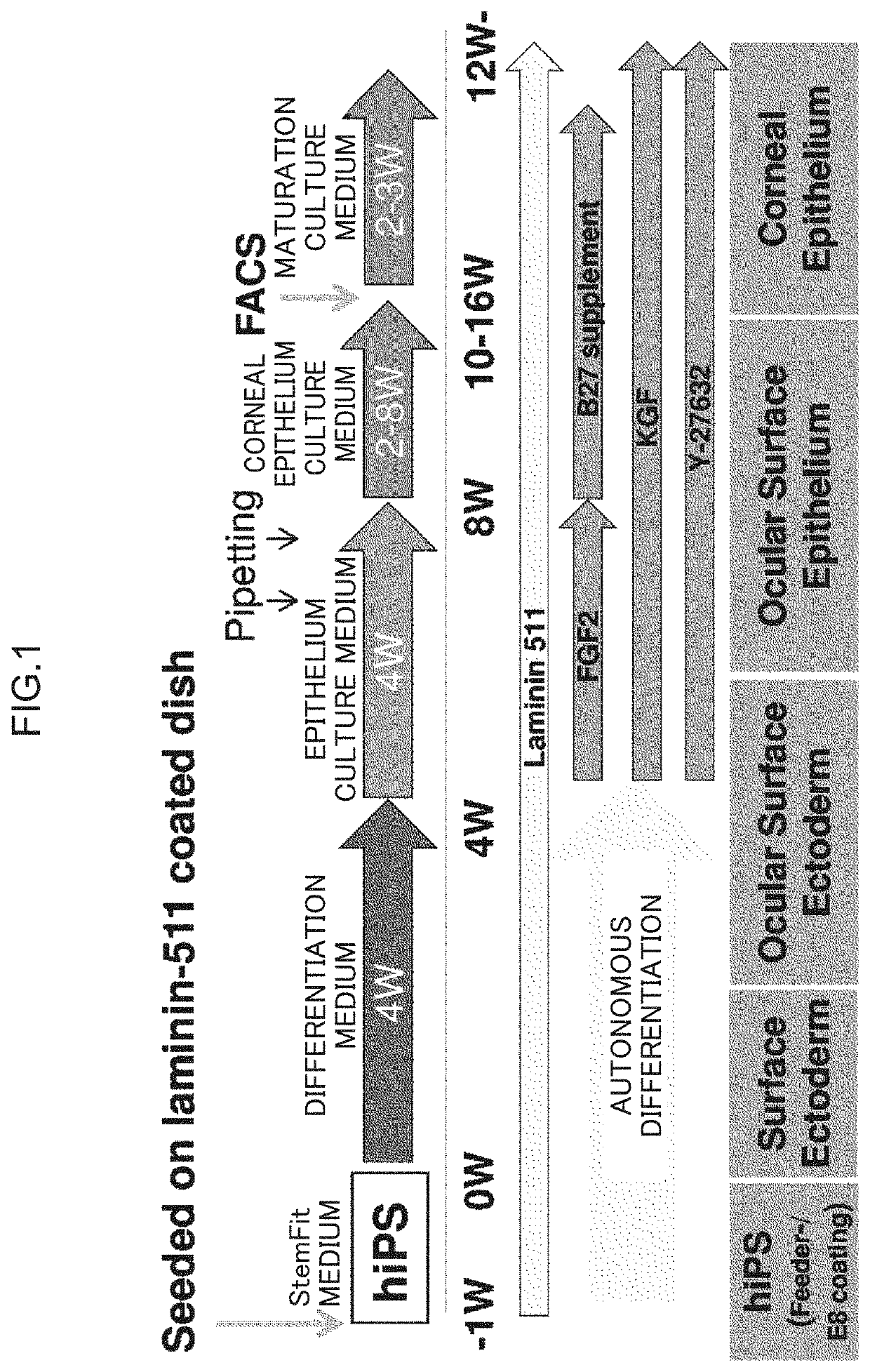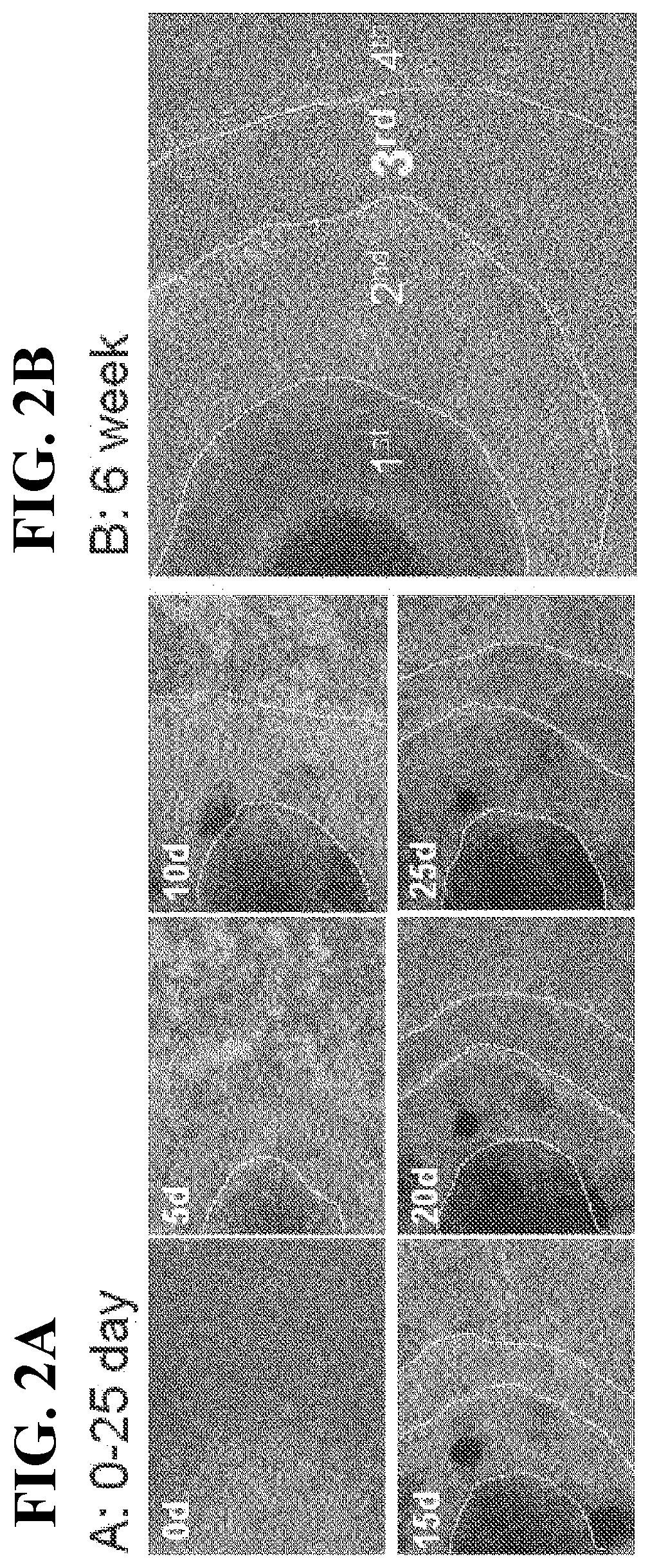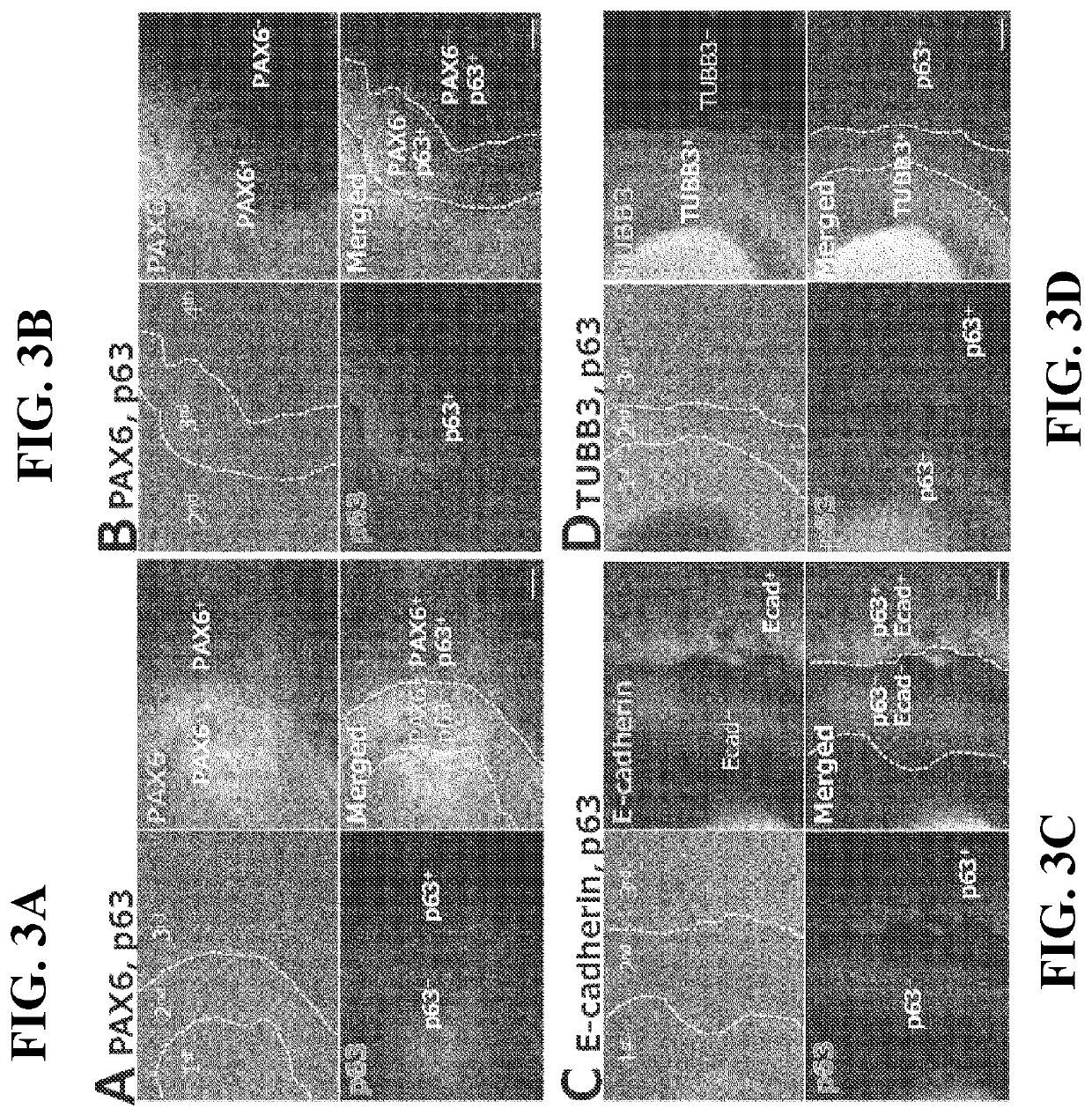Method for inducing differentiation of corneal epithelial cells from pluripotent stem cells
a technology of stem cells and cornea, which is applied in the field of inducing the differentiation of corneal epithelial cells from pluripotent stem cells, can solve the problems of rejection reaction, many limitations in research and use of stem cells, and limited applications of es cells, so as to achieve high safety and clinical application. suited
- Summary
- Abstract
- Description
- Claims
- Application Information
AI Technical Summary
Benefits of technology
Problems solved by technology
Method used
Image
Examples
example 1
of Differentiation from Human iPS Cell into Ocular Surface Epithelial / Corneal Epithelial Cell
[0146]From human iPS cells, ocular surface epithelial / corneal epithelial cells were differentiated in a serum-free medium without using feeder cells. The scheme of the method for differentiation induction is shown in FIG. 1.
[0147]The 201B7 cell line (an iPS cell line prepared by introducing Oct3 / 4, OX2, c-Myc, and Klf4 into fibroblasts) was used as human iPS cells, and the cells were seeded at a seeding density of 200 to 1,500 cells / cm2, 300 to 1,000 cells / cm2, or 450 to 700 cells / cm2 in StemFit (from Ajinomoto Co., Inc.) on a 6-well plate coated with laminin 511E8 fragment, and cultured for 7 to 13 days.
[0148]The medium was replaced with a differentiation medium (GMEM containing 10% KSR, 1 mM sodium pyruvate, 0.1 mM non-essential amino acids, and 55 monothioglycerol), and then replaced with the fresh differentiation medium once every 2 to 3 days to perform culture for about 4 weeks.
[0149]Th...
example 2
of Differentiation of Corneal Epithelial Progenitor Cell from Human iPS Cell
[0156]The colonies having the form of concentric circles, formed by the autonomous differentiation (4 weeks) of human iPS cells according to Example 1 were each isolated by replacing the medium with a differentiation medium for epithelium containing a growth factor at or after the 4th week and removing non-epithelial cells by pipetting from ocular surface epithelial stem cells appearing in the 3rd zone. In addition, at or after the 8th week, the medium was replaced with a corneal epithelium culture medium, and differentiation into corneal epithelial progenitor cells was induced.
[0157]At about the 12th week of differentiation induction, FACS was carried out using cell surface markers, such as TRA-1-60, SSEA4 and ITGB4 (FIG. 8). It was identified that the corneal epithelial progenitor cells could be isolated based on the expression of TRA-1-60, SSEA4, and ITGB4 and were selectively present in ITGB4-positive an...
example 3
tation of Human iPS Cell-Derived Corneal Epithelial Cell Sheet onto Rabbit Eye
[0160]The epithelial cell layer on the whole circumference of the rabbit corneal limbus was removed by corneal abscission to prepare a rabbit corneal epithelial stem cell deficiency model. Then, a human iPS cell-derived corneal epithelial cell sheet recovered in sheet form was transplanted.
[0161](1) Ocular Surface Observation Image
[0162]At the 7th day after transplantation, corneal transparency was kept in a sheet transplantation group, and fluorescein staining showed that barrier function had been recovered. On the other hand, a large part of the control eye was stained by fluorescein and remained in a state of barrier dysfunction (FIG. 12 middle).
[0163](2) Human iPS Cell-Derived Corneal Epithelial Cell Sheet after Transplantation
[0164]Each rabbit was euthanized on postoperative day 7, and the eyeball was excised and then chemically fixed with a 10% neutral buffered formalin solution. Then, corneal tissue...
PUM
 Login to View More
Login to View More Abstract
Description
Claims
Application Information
 Login to View More
Login to View More - R&D
- Intellectual Property
- Life Sciences
- Materials
- Tech Scout
- Unparalleled Data Quality
- Higher Quality Content
- 60% Fewer Hallucinations
Browse by: Latest US Patents, China's latest patents, Technical Efficacy Thesaurus, Application Domain, Technology Topic, Popular Technical Reports.
© 2025 PatSnap. All rights reserved.Legal|Privacy policy|Modern Slavery Act Transparency Statement|Sitemap|About US| Contact US: help@patsnap.com



